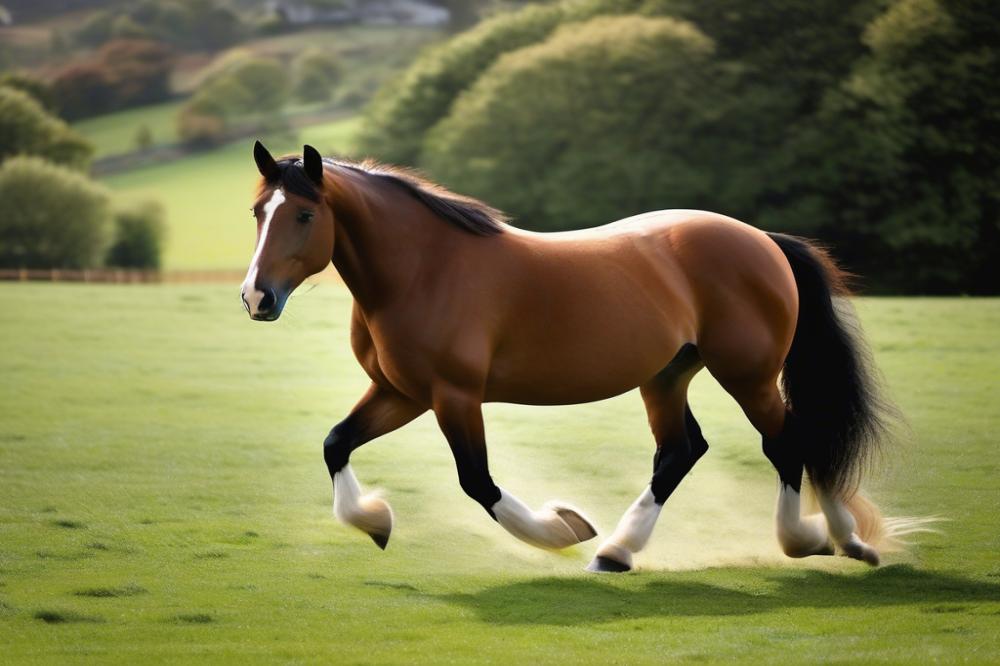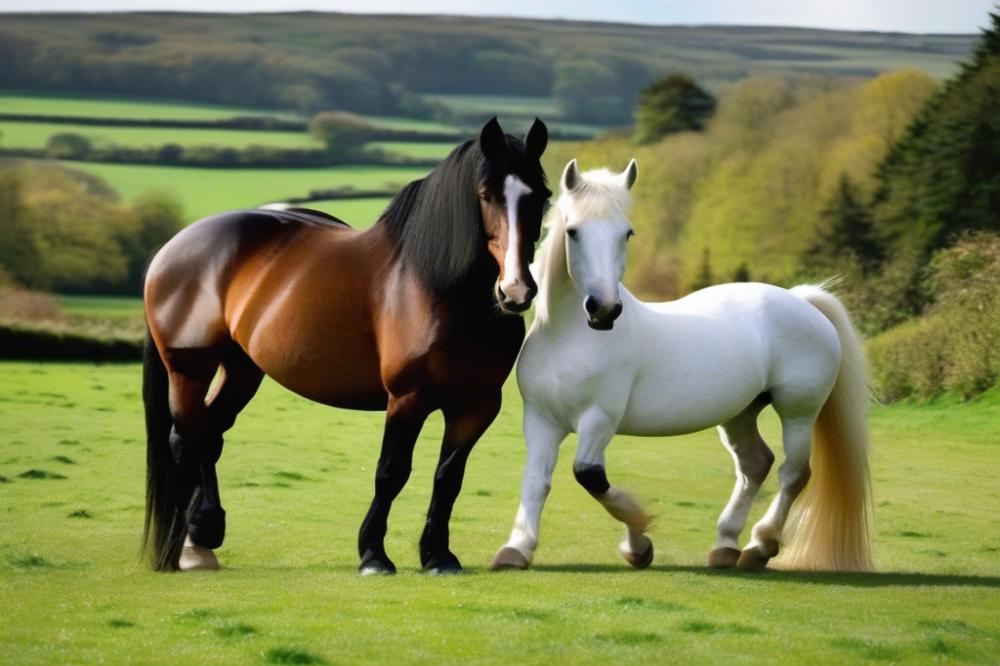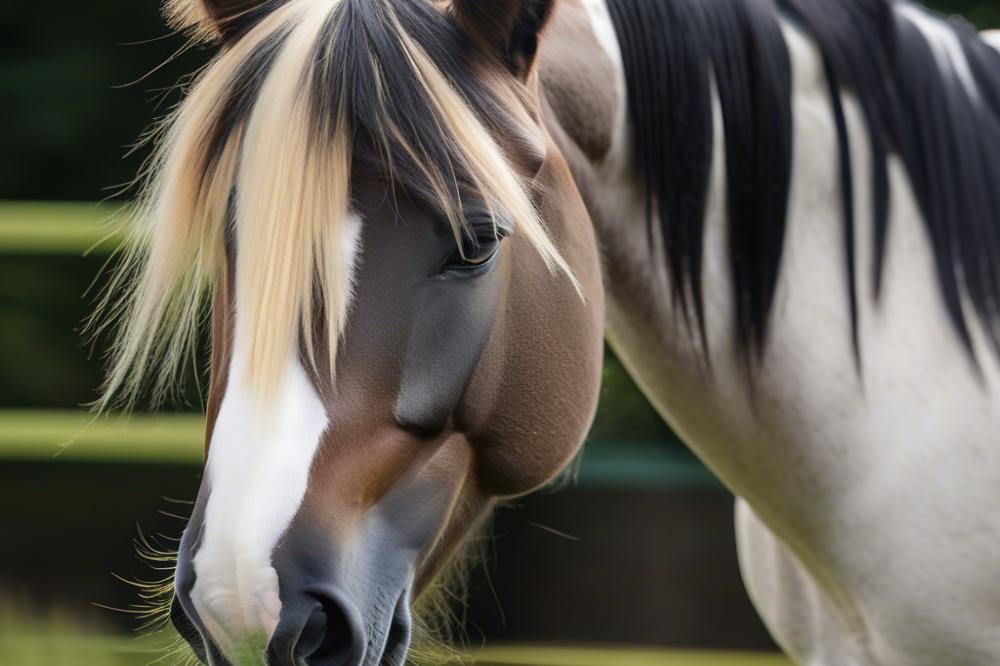Understanding the Irish Cob Horse
The Irish Cob horse, often known for its striking appearance and gentle demeanor, is a delightful breed that captures the hearts of many. With their heavy build, long flowing manes, and powerful legs, they look as if they just stepped out of a fairy tale. These horses possess an innate charm, making them popular choices for various equestrian disciplines, including the elegant world of dressage.
When it comes to equestrian techniques, few breeds are as versatile as the Irish Cob. They can adapt to different riding styles, which makes them great companions for both novice riders and seasoned professionals. Imagine trotting through a vibrant dressage field, performing movements that flow like water. Truly, this breed holds its own in the saddle, displaying grace while maintaining strength.
The Importance of the Irish Cob in Equestrian Disciplines
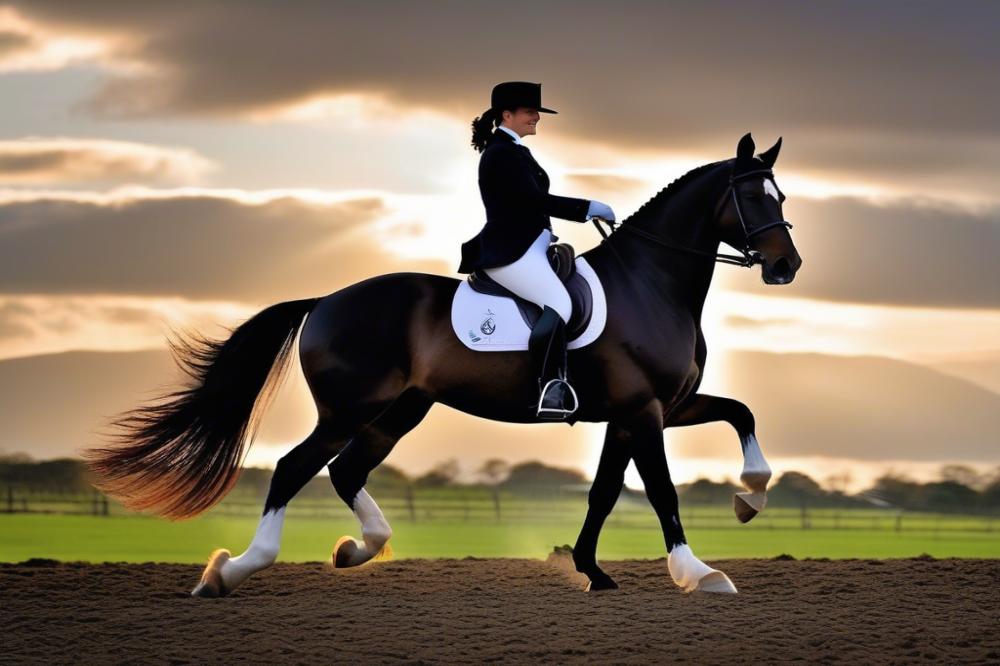
In the equestrian realm, the Irish Cob stands out for its ability to excel in various disciplines beyond just dressage. They have a rich history as workhorses, known for their strength and willingness to help. This background makes them not just spectacular athletes but also dependable partners. With proper horse care and training, they can truly shine, turning plenty of heads as they perform intricate maneuvers on the arena floor.
As horse enthusiasts, we often experience a bond with our equine friends, and this breed embodies that connection beautifully. Remember that moment when you first bonded with a horse? The sensation of throwing your arms around its neck, feeling its warmth and strength? It’s a moment to cherish. So, it may leave you pondering, is horse a pet animal? In many ways, for those who appreciate their character and capabilities, it absolutely is.
Purpose of This Article
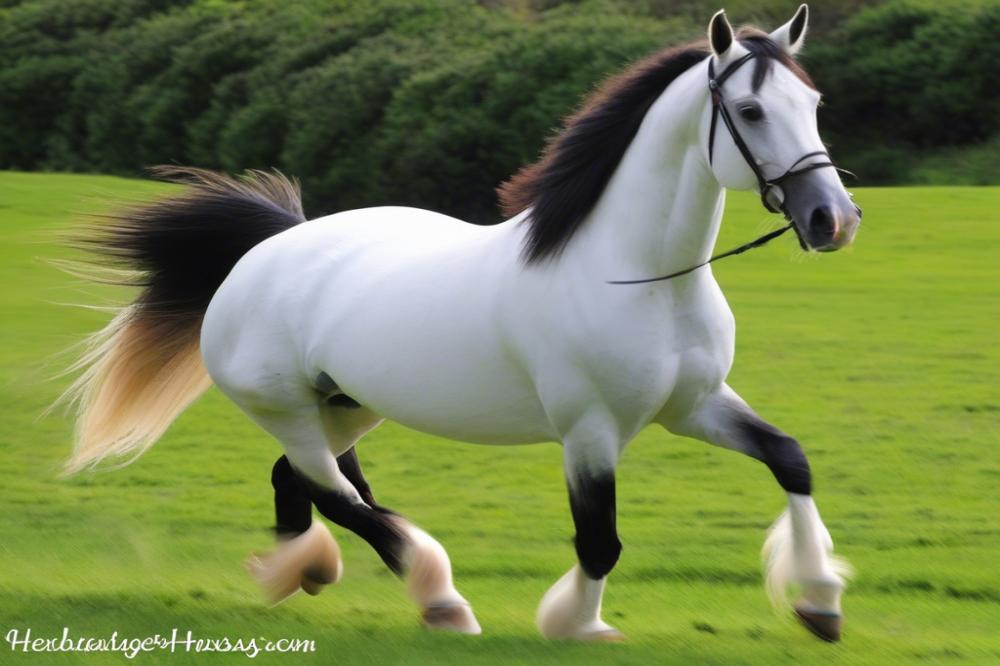
This article aims to delve deeper into the world of dressage with the Irish Cob horse. We will explore various aspects of training, care, and the techniques that enhance their performance in dressage. Along the way, we’ll share tips and anecdotes that can help you appreciate this remarkable breed even more. So, grab a cup of tea, settle in, and let’s embark on this equine journey together!
History of the Irish Cob
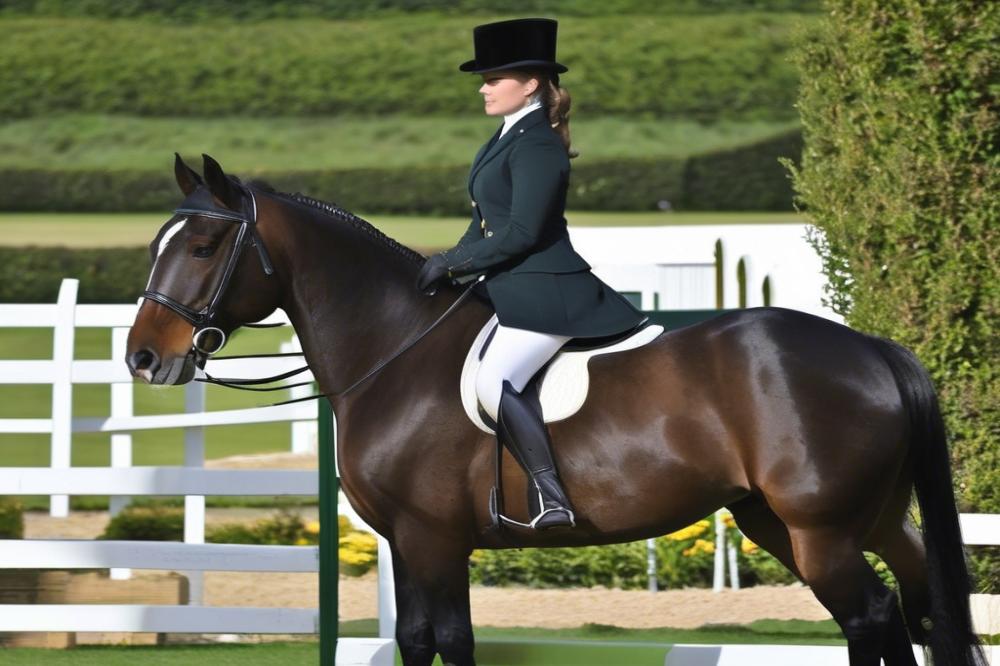
The Irish Cob, also known as the Gypsy Vanner or Tinker Horse, has a rich history that dates back centuries. Originating in Ireland, these horses were bred by the Romani people, also called Gypsies. They needed strong, sturdy animals to pull their caravans and carry goods. Over time, these equines became more than just working horses; they developed a personality all their own.
Development of this breed happened gradually. Breeders selected for toughness and agility, which made the Irish Cob well-suited for various tasks. Their thick manes and tails, coupled with a stocky build, added to their charm. These horses often sport a variety of colors and patterns, making them quite the eye-catchers in the pasture. While working horses were highly valued, they also found their way into the hearts of horse lovers everywhere.
Key Characteristics and Traits of the Irish Cob
When you look at an Irish Cob, several features stand out. Their muscular bodies and strong legs scream power and reliability. These horses typically stand between 13.2 to 15.2 hands high, putting them in the perfect range for riders of all ages. With a gentle temperament, they are often described as easy-going and friendly. These traits make them a favorite among families.
A notable trait is their feathering. Those long, silky hairs covering their lower legs give them a magical, fairy-tale appearance. Not only do they look enchanting, but good horse care prevents those feathers from becoming messy. Their calm demeanor blends well with different riding styles, making them versatile companions. In the world of equestrian sports, they prove time and again that they can handle various disciplines.
Traditional Uses of the Breed
Traditionally, Irish Cobs have been used for heavy pulling work. They excelled in agriculture, helping farmers move equipment and supplies. Many folks would also ride them for simple pleasure or to manage livestock. Nowadays, these horses are not limited to just heavy work. You can find them in various equestrian competitions, showcasing amazing skills in dressage.
Beyond their strength, they have become beloved family pets. Many people appreciate their gentle nature and loyalty. Children often find them trustworthy partners when learning to ride. Ideally suited for various equestrian techniques, these horses can adapt easily to many disciplines, whether it’s jumping, trail riding, or that beautiful dressage work. With the right horse training, an Irish Cob can shine brightly in any arena.
The Irish Cob in Dressage
Definition of dressage and its objectives
Dressage is more than just a fancy term. It’s an equestrian sport that focuses on training a horse to perform in a controlled and precise manner. The goal is to develop the horse’s ability to move in harmony with its rider. When performed correctly, it looks like a beautiful dance. Judges evaluate each performance based on elegance, precision, and the overall partnership between horse and rider. Riders aim to demonstrate their control and the horse’s training. Think of it as showcasing a well-rehearsed song, where every note counts!
Suitability of the Irish Cob for dressage
Now, what about our beloved Irish Cob? This breed has plenty of charm and character. They possess a strong but gentle nature that helps them in the dressage arena. With a solid build and balanced movements, they often display grace that can surprise many. Many riders find that their loving and willing temperament makes them great partners. In training sessions, these horses often show eagerness to learn new equestrian techniques. They might not have the highest level of agility like some lighter breeds. Still, when it comes to dedication and heart, the Irish Cob shines brightly.
Comparison with other dressage breeds
Comparing the Irish Cob to other dressage breeds provides some interesting insights. For starters, many riders admire warmbloods for their impressive stature and athleticism. These horses excel in high-level competitions. However, they can be quite high-strung. In contrast, the Cob’s calm demeanor often helps foster a strong bond with their rider. They might not be the first choice for those chasing flashy moves. Yet, they certainly offer reliability and adaptability. A thoroughbred might sprint past in competitions, but the Cob shows you can win hearts instead of just points. Riding styles can vary widely, but the Irish Cob brings its own charm to the field.
When pursuing dressage with this breed, remember that it all comes down to partnership. In the end, it’s not just about winning ribbons; it’s about that unique connection forged over time. Horse care, horse training, and patience are the winning combination for this breed. The road may twist and turn, but the journey is what truly counts. So, saddle up and enjoy the ride!
Training an Irish Cob for Dressage
Fundamental Training Principles
Training an Irish Cob for dressage requires patience and understanding. Think of it like building blocks. You start with a strong foundation before adding anything fancy. Establishing trust is key. A horse that feels secure with its rider is more willing to learn. This breed is known for its friendly nature, so use that to your advantage.
Harmony between horse and rider is essential. To achieve this, consistent cues are necessary. Use your voice gently and your body language wisely. Reward your horse with treats or praise when it gets things right. This positive reinforcement can create a cheerful learning atmosphere. Remember, equestrian sports are not just about discipline; they’re also about partnership.
Specific Techniques for Training an Irish Cob
Several techniques work well for an Irish Cob. Groundwork is a good starting point. Simple exercises like leading and lunging help develop communication. It’s not just about getting from point A to B. Think of these sessions as active conversations.
Next, introduce basic riding styles slowly. Start with walk and trot. These two gaits are natural for the horse and will build confidence. Once your horse is comfortable, progression to canter can happen. Keep it light and fun; no one enjoys a grueling workout. Incorporate simple dressage movements gradually, like circles and figures of eight.
Additionally, focus on transitions. Moving smoothly from one pace to another will refine your horse’s responsiveness. This isn’t a race; take your time and allow for mistakes. Every stumble is a chance to learn.
Common Challenges and Solutions
Training an Irish Cob for dressage is not always a walk in the park. Challenges arise, just like in any equestrian training. One common issue is stubbornness. Some Irish Cobs can be more than a little willful, and that can create tension. When this happens, breaking tasks into smaller steps is wise. This keeps your horse engaged and less overwhelmed.
Another challenge could be their strength. These horses are muscular and may resist lighter cues. Keep your aids clear and consistent. Use your leg to encourage movement rather than force. This builds respect and keeps your horse willing.
Also, remember that each horse has its rhythm. Finding that sweet spot takes time. Some days will be better than others, and that’s perfectly okay. Celebrate the small victories. Even a simple correct turn can be a reason to cheer.
Engaging in regular horse care is equally important. A fit horse is a happier horse. This means proper nutrition and consistent exercise outside of training sessions. Well-nourished horses show more interest in learning. Moreover, creating a warm, enjoyable training environment helps. A little humor while working with your Cob can make training sessions much more enjoyable. As they say, “A laugh a day keeps the doctor away”— or maybe just the stress!
Typical Qualifications and Abilities
Physical Qualities That Benefit Dressage Performance
The Irish Cob horse brings a solid build to the arena. These horses often possess powerful muscles and strong bones. Their compact bodies allow them to carry themselves with grace, even at lower levels of training. This natural strength is essential for executing brilliant movements in dressage. Additionally, their heart and lung capacity enables stamina for longer practices. With a thick mane and flowing tail, they can also be quite the eye-catchers in competitions.
Temperament and Trainability of the Irish Cob
When it comes to personality, the Irish Cob has a temperament that warms hearts. Known for being calm and easygoing, they often form strong connections with riders. This breed is often described as friendly, which makes horse training feel like a walk in the park. Patience is key to teaching them, but the rewards are definitely worth it. They seem eager to learn new equestrian techniques and different riding styles, especially if treats are involved! With a knack for problem-solving, these horses adapt well to various training methods.
Examples of Successful Irish Cob Horses in Dressage
Many Irish Cobs have made their mark in various equestrian sports, proving their worthiness in the dressage world. One notable name that comes to mind is “Duchess.” This remarkable mare consistently impresses judges with her fluid movements. Her ability to perform intricate patterns shows off what these horses can do when well-trained. Another success story is “Finn.” He’s known for his incredible ability to perform flying changes! Stories like Finn’s and Duchess’s showcase that being an Irish Cob offers advantages in the competitive arena.
Tips for Riders
Best Practices for Pairing with an Irish Cob
Riding an Irish Cob horse in dressage can feel like a dance. Your first step is to build a bond. Spend time getting to know your equine partner. The more you interact on the ground, the better your connection will be in the saddle. Start with light grooming. This simple task can foster trust between you. Remember, a relaxed horse will perform better and look splendid while doing so.
Keeping quiet in your cues is essential. Irish Cobs respond well to subtlety. Use gentle aids and remember that less is more. Too much noise can confuse them. Think of it as a whispered secret; they appreciate soft communication.
Practicing consistent routines can make a world of difference. Being predictable helps your horse feel secure about what comes next. This breeds confidence, both for you and for your Cob.
Understanding the Unique Needs of the Breed
Every breed has quirks, and the Irish Cob is no exception. These horses thrive on companionship. Incorporating regular social interactions can improve their mood and performance. They enjoy being part of a herd, so think of your training times as social events.
Horse care plays a crucial role in their performance. Regular check-ups and a balanced diet are pivotal. Ensure you provide enough exercise and mental stimulation, too. A bored Cob can be a mischievous one!
At times, their drive to please can lead to an overzealous attitude. Some might rush through their work to impress you. Stay patient. With the right equestrian techniques, you can channel their energy positively, turning that enthusiasm into grace and poise.
Advice for Improving Partnership and Communication
Effective communication is like a two-way street. Speak softly; let your Cob guide you. Pay attention to their body language. Is their head up? Are their ears perked forward? These signs can tell you a lot about how your horse feels.
Consider trying different riding styles to see what resonates best. Some Cobs might shine in traditional dressage, while others might prefer a more relaxed approach. Horse training should be adapted based on your horse’s reactions. Don’t hesitate to switch it up if something doesn’t seem to work.
Remember that every ride is a lesson. Celebrate small victories and learn from mistakes. Humor can often lighten the mood. If your Cob tries to take a bite of grass during your ride, just laugh it off. They’re typically silly, and that’s part of their charm.
In essence, fostering a strong partnership with your Irish Cob horse requires patience, understanding, and a touch of humor. So, saddle up and enjoy the journey together!
Wrapping It Up: The Charms of the Irish Cob in Dressage
When we look back at the Irish Cob horse and its strengths in the world of dressage, it’s hard not to feel a sense of admiration. These horses are not just strong and sturdy; they also exhibit a level of intelligence and sensitivity that makes them unique companions in the arena. With their natural elegance combined with a willingness to learn, they can truly shine among more traditional dressage breeds. Their calm demeanor allows riders to cultivate a deep bond, which is essential for success in this discipline.
So, what’s the takeaway for riders considering this breed? Well, if you’re looking for a horse that can not only help you navigate the intricacies of dressage but also add a splash of fun to your training sessions, an Irish Cob might just be your perfect match! The joy that comes from working with these horses is palpable. Imagine yourself gliding through a routine, your Irish Cob responding like a seasoned partner. It’s a partnership that celebrates the strengths of both rider and horse, and it encourages everyone involved to push their limits.
Let’s also think about the future for Irish Cobs in dressage. These versatile horses are carving out a niche for themselves in various disciplines, and that extends to dressage as well. As more riders become aware of their capabilities, we can only expect to see greater participation and appreciation for these magnificent creatures. They may not always fetch the same price as some fancy thoroughbreds, yet their value in terms of companionship and talent is immeasurable, making the draft horse price quite reasonable in the grand scheme of things.
In the end, whether you’re an experienced rider or just dipping your toes into the equestrian world, consider exploring the possibilities with an Irish Cob. From the vibrant horse habitat of Ireland to the supple movements you can refine in the dressage ring, these horses offer a wealth of experience and joy that simply cannot be overlooked. Harness the potential of these gentle giants, and you may just find yourself on a path filled with achievements, laughter, and unforgettable moments.

